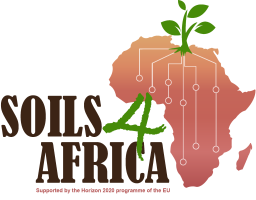

The European Commission has launched an online public consultation on the development of a new EU Soil Strategy. This is the last of a set of public consultations on different ecosystems delivering on the specific commitments in the EU Biodiversity Strategy 2030.
Healthy soils produce our food and raw materials, clean our drinking water, reduce flood risks and store huge amounts of carbon. They are essential for achieving the objectives of the European Green Deal such as climate neutrality, biodiversity restoration, zero pollution, healthy and sustainable food systems and a resilient environment. Yet our soils are degrading due to unsustainable management, overexploitation, climate change and pollution. For that reason, the EU Biodiversity Strategy for 2030 announced the adoption of a new Soil Strategy in 2021.
Commissioner for the Environment, Oceans and Fisheries Virginijus Sinkevičius said: "A quarter of our planet’s biodiversity is present in soil. This is literally a treasure under our feet, and our food and our future depend on it. We must equip the European Union with a robust soil policy that will allow us to reach our ambitious climate, biodiversity and food security goals, and step up our efforts to manage soil in a way that it can deliver for people, biodiversity and climate."
The aim of the new EU Soil Strategy will be to address soil- and land-related issues in a comprehensive way and to help achieve land degradation neutrality by 2030, one of the key targets of the Sustainable Development Goals (SDGs). It will look into how to protect soil fertility, reduce erosion and increase soil organic matter. The strategy will consider challenges such as identifying contaminated sites, restoring degraded soils, defining the conditions for their good ecological status and improving the monitoring of soil quality.
In addition, the strategy will take into account the EU’s international commitments, feeding into the EU position at the upcoming global biodiversity negotiations in COP 15 of the UN Convention for Biological Diversity (CBD), as soils are home to more than 25 percent of our planet's biodiversity. Actions related to soil and land are as well priorities under the UN Framework Convention on Climate Change (UNFCCC), the UN Convention to Combat Desertification (UNCCD), the FAO’ Global Soil Partnership and more broadly for EU external action and development cooperation.
Based on the Roadmap on a new Soil Strategy, the consultation seeks stakeholders’ input on challenges and opportunities regarding our land and soils ecosystems which deliver valuable services such as the provision of food, energy and raw materials, carbon sequestration, water purification and infiltration, nutrient regulation, pest control and recreation.
Other public consultations are taking place in parallel on ‘nature restoration targets’, on ‘Zero Pollution Ambition for air, water and soil’, on ‘Land Use, Land‑use Change and Forestry — review of EU rules’, and the new EU Forest Strategy.
Through this public consultation, the Commission invites citizens and organisations to contribute to the preparation of the new EU Soil Strategy and share their views on potential objectives and actions. It will remain open for feedback for 12 weeks until 27 April 2021.
Soil is a thin layer that hosts a quarter of our planet’s biodiversity. Soil formation is very slow, as thousands of years are needed to create just few centimetres. At human scale soil is thus a non-renewable resource.
Soils are dramatically degrading at European and global level, as portrayed by the European Environment Agency’s 2020 State of the Environment Report, the Special IPCC report on Climate Change and Land and the IPBES Assessment Report on Land Degradation and Restoration. Erosion, loss of organic matter, compaction, contamination, sealing, salinization, landslides and desertification have negative impacts on human health, natural ecosystems and climate, as well as on our economy.
Land and soil degradation have transboundary effects such as CO2 emissions from soil organic carbon and loss of biodiversity, hampering EU food security through reduced production of food commodities traded in the internal market, hampering water quality across borders through contaminants and sediments in river basins, food safety concerns from soil contaminants. Poor land management, such as deforestation, overgrazing, unsustainable farming and forestry practices, construction activities and soil sealing, as well as pollution from industrial emissions, air deposition or contaminants present in fertilisers or sewage sludge applied to soil, are among the main causes of this situation.
The European Environment Agency concluded that the lack of a comprehensive and coherent policy framework to protect land and soil is a key gap that reduces the effectiveness of the existing incentives and measures and may limit Europe’s ability to achieve future objectives. If no additional action is taken, there is a high risk that the EU will fail its Green Deal and international objectives. In the meantime, land and soil continue to be subject to severe degradation in the EU.
More information